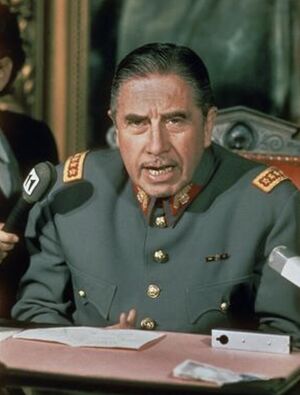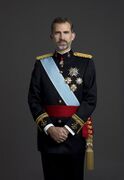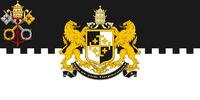Propaganda in Creeperopolis: Difference between revisions
| Line 60: | Line 60: | ||
==== Quebecshire and Lyoa ==== | ==== Quebecshire and Lyoa ==== | ||
In Creeperian Propaganda, [[Quebecshire]] and [[Lyoa]] are portrayed as Creeperopolis' greatest allies. | |||
==== Malgax and Morova ==== | ==== Malgax and Morova ==== | ||
Revision as of 17:38, 14 January 2020

Propaganda has been used in Creeperopolis since the early years of the Second Parliamentary Era to sway public opinion. Propaganda was a crucial instrument for acquiring and maintaining power, and for the growth and maintaining of support for the Catholic Imperial Restoration Council and the National Council for Peace and Order. Propaganda today is used by the Creeperian government to justify its authority, programs, and encourage popular support for the monarchy and army.
Use
Second Parliamentary Era
During the Second Parliament of Creeperopolis, both the Creeperian Conservative Coalition and the People's Social Coalition spread propaganda to sway support for their coalition or to demonize the opposing coalition.
The Creeperian Social Communist Party and Creeperian Pro-Fatherland Front both used propaganda heavily to glorify militarism and their own communist and fascist revolutions.
Civil War
During the Creeperian Civil War, both the Catholic Imperial Restoration Council and the National Council for Peace and Order utilized propaganda for political and military means.
1949-2003
From 1949-2003, propaganda was used to denounce communism and attack the Senvarian Liberation Front, Militarist Front for National Liberation, and Mara Salvatrucha.
Post 2003 Coup
Since 2003, the monarchy made heavy use of propaganda, including pageantry and rhetoric, to inspire the nation into the unity that would obey.
Glorification of the monarchy became more common since the 2003 Creeperian Coup D'état.
Doctrine
A doctrine of Romerism has been frequent in Creeperian propaganda. National Catholicism, Creeperian Nationalism, Anti-Communism, Monarchism, and Militarism are common themes.
The Romerist accepts and loves life; he rejects and despises suicide as cowardly. Life as he understands it means duty, elevation, conquest; life must be lofty and full, it must be lived for oneself but above all for others, both nearby and far off, present and future.
— Alexander II, 2007.
Themes
Personality Cult
God and the Emperor are at the center of Romerism and is portrayed as such. The cult of personality of God and the Emperor is a major point of unification in Creeperopolis. Both are in all aspects of Creeperian life.
In Creeperopolis, God is seen the absolute and divine ruler of the world and the Supreme ruler of all. The Emperor is portrayed as God's servant and mediator on the planet and a gift to the Creeperian people.
The Emperor is portrayed constantly in the Creeperian media as the great successor of Crusader King Alfonso I.
Alexander II is portrayed to be one of Creeperopolis' most popular Emperors.
Unity
National and social unity is heavily stressed by Creeperian Propaganda. The Creeperian Initiative is seen as a unifying force in the nation.
Monarchy
Creeperian Race
Creeperian Culture
Economics
Anti-Communism
Foreign Relations
Quebecshire and Lyoa
In Creeperian Propaganda, Quebecshire and Lyoa are portrayed as Creeperopolis' greatest allies.
Malgax and Morova
BEZ Members
Media
Newspapers
Slogans
Television and Movies
Music
Schooling and Youth
Gallery
Alexander II's official portrait. A 2019 propaganda piece showing the greatness of Adoldo III, Romero I, and Alexander II. The logo of the Creeperian Initiative.



